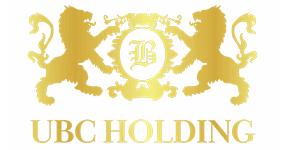Wholesale shopping is a business model where products are purchased in large quantities. Unlike retail sales, wholesale shopping typically involves buying and selling large quantities of goods. In this article, we will examine the advantages and disadvantages of wholesale shopping in detail. We will examine the opportunities and challenges that wholesale shopping offers for both individual consumers and businesses.
What is Wholesale Shopping?
“Wholesale” shopping is a business model in which products are sold in large quantities, typically by manufacturers or distributors, to retailers or other businesses. This shopping method is typically characterized by lower unit costs and larger order quantities. Wholesale shopping can cover a wide range of products for both personal and commercial purposes.
Advantages and Disadvantages of Wholesale Shopping
1. Low Unit Costs
One of the biggest advantages of wholesale shopping is its lower unit costs. Products purchased in bulk are often offered at lower prices by manufacturers and suppliers. This allows shoppers to pay less per item. For businesses in particular, this cost advantage plays a significant role in increasing profitability.
Lower unit costs provide cost savings for both small businesses and large corporations. Lowering product prices allows businesses to make their sales prices more competitive, thereby increasing their market share. Furthermore, lower costs give businesses greater flexibility in purchasing large volumes and help them implement marketing strategies more effectively. For example, offering promotions and discounts can attract customers and increase sales.
2. High Profit Margins
Low unit costs allow for high profit margins in retail sales. Products purchased wholesale can generate significant profits when sold at retail prices. This presents a profitable business model for both individual entrepreneurs and large businesses.
High profit margins strengthen businesses’ financial performance and ensure long-term sustainability. Increasing profit margins allows businesses to invest, innovate, and capitalize on growth opportunities. Furthermore, high profit margins buffer businesses against cost increases and make them more resilient to economic volatility.
3. Flexibility in Inventory Management
Wholesale shopping offers flexibility with a wide selection of products and large inventories. Businesses can offer greater variety and options when managing their inventory. Furthermore, high inventory levels are beneficial for meeting fluctuations in demand and minimizing supply chain disruptions.
A wide range of inventory allows businesses to offer their customers a wider selection of products and increases customer satisfaction. Responding quickly to fluctuating demand prevents customer churn and strengthens your business’s reputation. Furthermore, large inventories act as a buffer against supply chain disruptions and ensure a constant supply of products.
4. Purchasing Power
Buying in bulk increases purchasing power. Businesses that can buy in large quantities are often able to negotiate better deals with suppliers. This provides the opportunity to build long-term business relationships and secure better payment terms.
Increased purchasing power allows for more advantageous negotiation positions with suppliers. Establishing long-term business relationships both reduces costs and increases reliability in the supply chain. Furthermore, large purchases instill confidence in suppliers and lead to better service and product quality.
5. Product Variety
“Wholesale” shopping offers a wide variety of products. Purchasing large quantities of products across different categories provides consumers and businesses with a variety of product options. This variety provides flexibility in meeting consumer demands.
Product diversity provides customers with more options, increasing satisfaction and providing a competitive advantage. Furthermore, a broad product range allows businesses to quickly respond to market trends and appeal to different customer segments. This strengthens your business’s market position and increases customer loyalty.
Disadvantages of Wholesale Shopping

1. High Start-Up Costs
Buying wholesale often requires high startup costs. Buying large quantities of products requires a high initial capital investment. This can be challenging for small businesses or individual consumers. High startup costs can increase financial risk.
High initial costs require businesses to carefully plan their finances. When purchasing large quantities, it’s important to evaluate financing options and manage costs. You may also need to develop effective sales and marketing strategies to ensure rapid inventory turnover and accelerate return on investment.
2. Storage and Logistics Challenges
Receiving large quantities of products can create challenges in warehousing and logistics management. Managing inventory, storing, and distributing products can create additional costs and operational challenges. Creating an effective logistics plan and managing storage space is becoming a crucial requirement for businesses.
Warehousing and logistics management can be a complex process, especially for large businesses. Regular inventory monitoring is essential, products must be stored under appropriate conditions, and logistics processes must be managed effectively. Furthermore, utilizing appropriate software and technologies can be beneficial for optimizing logistics costs and creating an efficient supply chain.
3. Retention of Products
When purchasing in bulk, there’s a risk of some products being out of stock. This can lead to financial losses, especially for products that are prone to perish or become obsolete quickly. Purchasing products based on accurate forecasts and market research can mitigate these risks.
Leftover products can lead to increased costs and difficulty managing inventory. To mitigate this risk, you should regularly update market research and carefully forecast demand. Additionally, offering promotions and discounts to expedite the sales process can help you sell remaining products faster.
4. Market Risks
When purchasing wholesale, market risks and demand fluctuations should be considered. Product shortages or changing market conditions can reduce the economic impact of wholesale purchasing. It’s important to regularly analyze market trends and consumer behavior to minimize these risks.
To manage market risks, it’s helpful to monitor economic indicators and industry trends, conduct market research, and evaluate customer feedback. Furthermore, by offering a flexible business model and a variety of product options, you can quickly respond to changes in market conditions.
5. Limited Flexibility
Wholesale shopping often requires focusing on a specific product or product group. This can lead to some limitations in product variety. It can be difficult for businesses to maintain flexibility across product categories, which can lead to limitations in meeting customer demands.
Limited flexibility requires strategic planning to diversify your product portfolio and address diverse customer needs. By offering a flexible inventory management strategy and a variety of product options, you can better serve your customers and adapt to market demands.
Tips for Wholesale Shopping

1. Do Market Research
Conducting thorough market research before purchasing wholesale allows you to find the best deals and opportunities. By analyzing demand trends, competitors, and supplier options, you can make informed decisions. Market research also helps mitigate the risks of wholesale shopping.
Market research helps you choose the right suppliers and products. You can also compare prices and terms to find the best deals. By evaluating the advantages and disadvantages of wholesale shopping, you can optimize your business strategy and gain a competitive advantage.
2. Work with Reliable Suppliers
Partnering with reliable suppliers is critical to success in wholesale shopping. Assessing the quality and reliability of suppliers ensures that products are delivered on time and to the expected quality. Establishing long-term relationships can reduce costs and streamline business processes.
When selecting a supplier, checking references and reviewing past business relationships can be helpful. Establishing long-term agreements with reliable suppliers ensures both quality and delivery times. Furthermore, maintaining regular communication and collaboration with suppliers can help you resolve issues quickly.
3. Implement Effective Inventory Management
Inventory management is essential for effective wholesale merchandising. By forecasting demand and monitoring inventory levels, you can prevent product holdups and cost increases. Using inventory management software and tools can make this process more efficient.
Effective inventory management allows you to optimize stock levels by accurately forecasting demand. Furthermore, by regularly monitoring stock movements, you can ensure timely product replenishment and control costs. Inventory management software can increase efficiency by automating these processes.
4. Take Advantage of Digital Tools
Digital tools and technologies can be useful in optimizing wholesale shopping processes. By using e-commerce platforms, inventory management systems, and data analysis tools, you can manage your business processes more effectively. Digital tools can increase operational efficiency and reduce costs.
Digital tools make business processes faster and more efficient. E-commerce platforms allow you to manage online orders, and inventory management systems track product movements. Data analytics tools allow you to understand market trends and customer behavior so you can make more informed business decisions.
5. Develop Risk Management Strategies
Developing strategies to manage risks in wholesale shopping is crucial. Taking precautions against factors such as currency risks, market risks, and logistical challenges protects your business and increases its sustainability. Creating and regularly updating risk management plans allows you to identify potential problems in advance.
Risk management strategies help you prepare for potential problems. By taking precautions against risk factors like exchange rates and economic fluctuations, you can prevent financial losses. Furthermore, developing a flexible strategy to address market fluctuations and logistical challenges makes your business more resilient.
Conclusion
Wholesale shopping is a business model that offers many advantages for both individual consumers and businesses. Advantages such as low unit costs, high profit margins, and a wide variety of products make this model attractive. However, disadvantages such as high start-up costs and warehousing and logistics challenges should also be considered. Strategies such as effective market research, working with reliable suppliers, efficient inventory management, and the use of digital tools contribute to the successful implementation of wholesale shopping. The advantages and disadvantages discussed in this article will help you better understand the potential and limitations of wholesale shopping.
Digital Marketing Trends: Featured Digital Strategies for 2024
E-Commerce and Digital Marketing How to Build a Successful Online Store?






